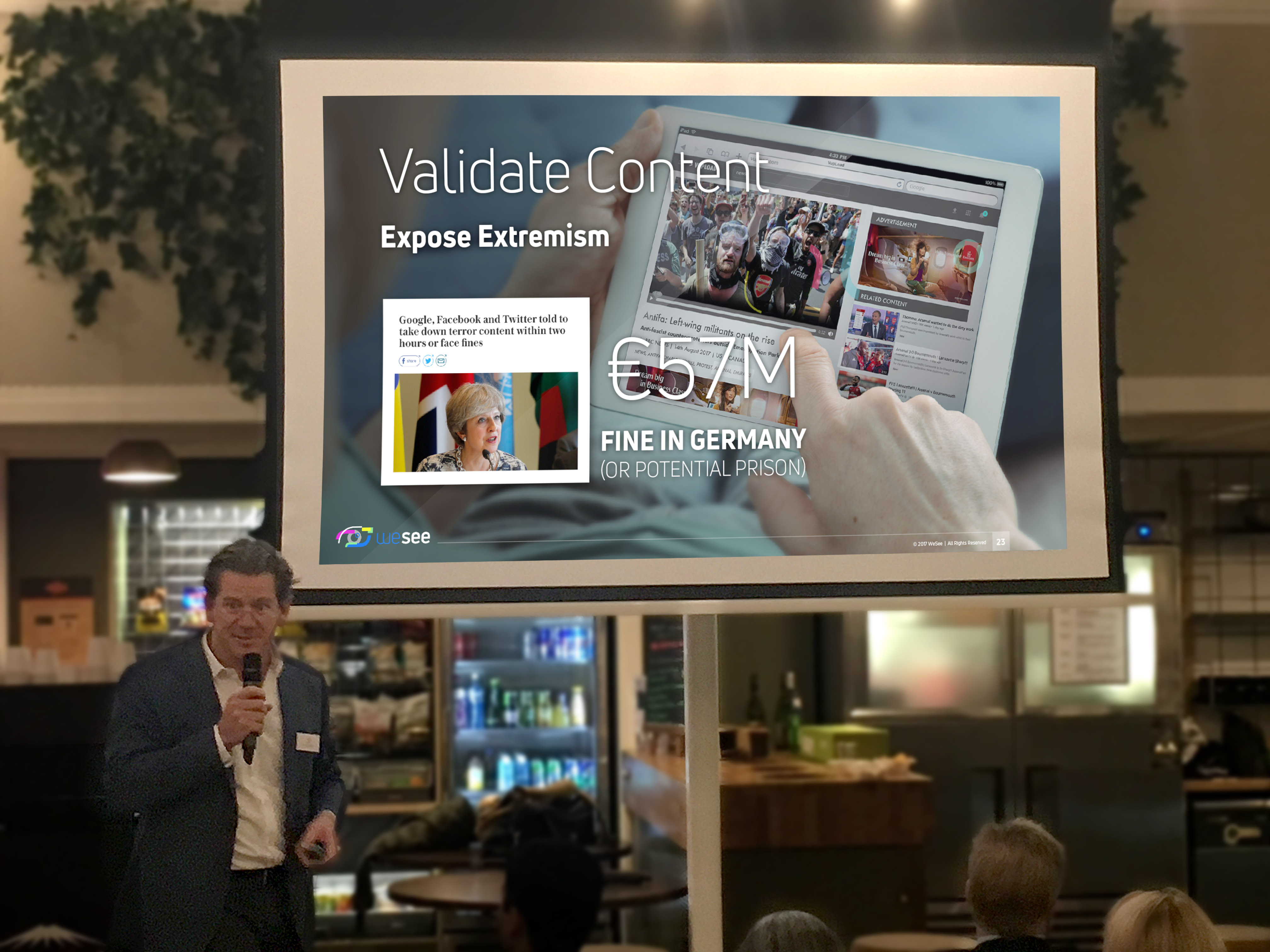
Viztech industry pioneer transforms digital image and video search and tagging, providing a way to meet the UK PM’s demands over terrorist content, among other key applications.
Computer vision innovator WeSee has launched a unique and powerful AI-based technology that can process, search and categorise video, as well as still images, quickly and efficiently, handling information just like the human brain does but up to 1,000 times faster.
It has enabled WeSee to develop the world’s most advanced adult and violence filter. One of its many applications includes the policing of terrorist and other dangerous and inappropriate online visual material answering recent calls from UK Prime Minister Theresa May and helping make the web more child- and brand-friendly.
 Powered by deep learning and neural networks, similar to the technology behind the iPhone X’s facial recognition system, WeSee’s Visual Intelligence Engine (VIE) pioneers a whole new industry sector, Viztech, which will ultimately transform the way we work, live, appear and interact with each other, according to the company’s CEO David Fulton.
Powered by deep learning and neural networks, similar to the technology behind the iPhone X’s facial recognition system, WeSee’s Visual Intelligence Engine (VIE) pioneers a whole new industry sector, Viztech, which will ultimately transform the way we work, live, appear and interact with each other, according to the company’s CEO David Fulton.
“WeSee doesn’t just see visual content, it understands every multi-layered element within images and videos in the same way humans do, using biologically inspired artificial intelligence,” he said. “It allows organisations to automatically harness the huge opportunities and value hidden inside all images and videos.”
Unlike other systems that are based on open-sourced frameworks, WeSee’s unique smart approach to video classification combines machine and deep learning with the company’s own proprietary rule-based algorithms, alongside specialists dedicated to data collating, sorting and tagging.
“It has the power to answer the Prime Minister’s recent demands over terrorist online content,” said Fulton. “Plus the sky really is the limit when it comes to other applications that could transform broadcasting, insurance, branding, law enforcement and more.”
Although still at an early development stage, WeSee’s technology can already be used by broadcasters as a kind of video search engine. It could also help them categorise and tag video content on-the-fly, quickly and easily – something that would ordinarily take days to be done manually can now be executed automatically in seconds. It should soon also be possible for WeSee to determine whether an individual is telling the truth or not through technology that takes facial recognition to a new level. This has obvious implications for insurance claims and criminal prosecution.
“We are only just scratching the surface of what is possible with Viztech,” added Fulton.
Source: WeSee

You must be logged in to post a comment Login